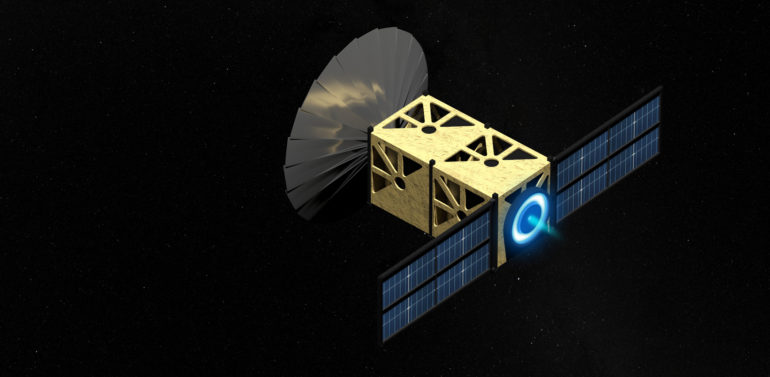
The ‘SmartFood’ project, promoted by the Regional Ministry of Agriculture, Livestock, Fisheries, and Sustainable Development, is at the forefront of technology in the primary sector with the launch of the first nanosatellite for earth observation purposes in Andalusia. “The project aims to quantify the impact of agricultural, livestock, and fishing activities on biodiversity, in the context of the fight against climate change,” explained regional minister Carmen Crespo.
This milestone will complement the capture of information carried out through the deployment of near and remote sensors, as well as the use of images from other satellites already in orbit. “The aim is to achieve an integration of data at different heights and scales, with which to generate tools for monitoring and quantifying the ecosystem services associated with the agricultural, forestry, livestock, and fisheries sectors in the region,” he added.
This initiative, a pioneer in our region, led by the Agricultural and Fisheries Management Agency of Andalusia (Agapa), with the technical advice of a multidisciplinary scientific team from the University of Cordoba (UCO) and the collaboration of the European Research Consortium, ‘LifeWatch ERIC’, has a budget of almost 1 million euros, 80% financed by the European Regional Development Fund (Feder), through the Pluri-regional Operational Programme of Spain 2014-2020.
Tendering process
The tender period for the design, manufacture, supply, and launching into the orbit of a nanosatellite, giving the green light to what will be the most ambitious action of the ‘Smartfood’ project, was launched this week by Agapa. The deadline for submitting bids is 29 March.
Nanosatellites, also known as ‘CubeSats’, offer the possibility of complementing, with more specific objectives and missions, the information offered by traditional satellites, such as the Sentinel constellation. In addition, the lighter design of this type of ‘small-scale’ satellite represents an operational and economic advantage, thanks to the reduction of mission time and cost. These nanosatellites can provide high spatial resolution data (in some cases below 10m), and temporal resolution (with even daily data acquisition frequencies), thanks to their low orbit of around 500 km.
Launch planned for 2023
Specifically, this nanosatellite, which will be put into orbit within the framework of the ‘SmartFood’ project for earth observation purposes, will integrate a high-resolution camera, as well as the corresponding power supply equipment and communications system necessary for data transmission to the ground control station, and is scheduled to be launched next year.
The main actions of this phase of work include the deployment of a network of ground sensors to monitor climate, soil, water, and plant variables; the capture of aerial images using drones and balloon probes; and the capture of spatial images, with a comprehensive approach to data at different spatial-temporal scales for monitoring agricultural and livestock systems.
This project also aims to establish standardised protocols for the monitoring, quantification, and evaluation of biodiversity through the integration of open data. To this end, the final objective is to offer tools and collaborative work environments for the research community, making the information and applications developed available to the different end-users involved in the primary sector.
Furthermore, given the international nature of the ‘Smartfood’ project, it will make the entire ecosystem of data and applications generated available to the ‘LifeWatch ERIC’ community, a priority partner of the project, thus facilitating the consolidation and collaborative analysis about the monitoring and control of the impact of agriculture and fisheries on biodiversity, as well as the measurement of the effects of climate change on the sustainability and profitability of farms and fisheries.


